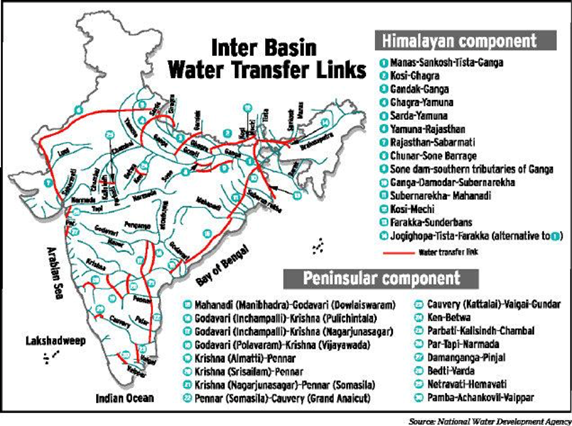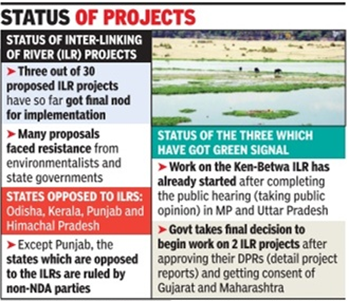



Explained: When Supreme Court reviews a decision
A number of recent Supreme Court decisions have given currency to the expression “review petition”.
- According to constitution, a judgment of the Supreme Court (SC) becomes the law of the land.
- Under Article, 137-SC can review its own decision, which is known as review petition.
- Under review petition, Court is not allowed to take fresh stock of the case but to correct grave errors that have resulted in the miscarriage of justice.
- Any person aggrieved by a ruling can seek a review and file a review petition. However, court has its discretion to allow a review petition.
- To correct a “patent error” and not “minor mistakes of inconsequential import”.
- A review can be accepted “only where a glaring omission or patent mistake or like grave error has crept in earlier by judicial fallibility”.
- Mistake or error apparent on the face of the record.
- Any other sufficient reason. It means a reason that is analogous to the other two grounds.
- A review is not an appeal whereby an erroneous decision is reheard and corrected but lies only for patent error.
- Possibility of two views on the subject cannot be a ground for review.
- A review petition must be filed within 30 days of the date of judgment or order.
- An order in the case is an interim ruling that is subject to its final verdict.
- Lawyers would ordinarily entertain review petitions without oral arguments.
- In exceptional cases, the court can allow an oral hearing.
- Supreme Court agrees for review petition in Sabrimala case verdict by 3:2.
- Court rejected Rafale review petition and upheld its earlier verdict as final judgement.
- All India Muslim Law Board is planning to file a review petition in Ayodhya case verdict.
- As the court of last resort, the Supreme Court’s verdict cannot result in a miscarriage of justice.
- Supreme Court has evolved the concept of curative petition. Which is heard after a review is dismissed to prevent abuse of its process. It is also entertained on very narrow grounds.
- For revocation of the President's rule, a recommendation of the Union Cabinet to the President is required.
- In case of Maharashtra, Government has revoked the president rule without holding the cabinet meeting by invoking rules 12.
- Rule 12 of the Government of India (Transaction of Business) Rules, 1961, allows the Prime Minister to depart from laid down norms at his discretion.
- The Cabinet can subsequently give post-facto approval for any decision taken under Rule 12.
- It is usually not used to arrive at major decisions by the government.
- The last big decision taken through the invocation of Rule 12 was re-organisation of the state of Jammu and Kashmir into the Union Territories of Jammu and Kashmir, and Ladakh on October 31.
- The Cabinet gave post-facto approval to the same on November 20.
The Supreme Court has put on hold a plea for ordering a floor test in the Maharashtra Assembly till it examined records.
- Produce the Governor’s order of November 23.
- The letter of Mr. Fadnavis to the Governor staking claim to form the government.
Both these documents have to be provided by Monday.

- About 71% of rural households had access to toilets at a time when the Centre was claiming 95% had access.
- Almost 42% of the rural households in Jharkhand had no access to a toilet at that time.
- In Tamil Nadu, the gap was 37%, followed by 34% in Rajasthan.
- The National Statistical Office said 28.7% of rural households had no toilet access at the time. When, government declared 25 States and Union territories as ODF.
- 71% coverage is a significant improvement over the last survey of 2012, when coverage was mere 40%.
- The survey was carried out between July and December 2018, with a reference date of October 1.
- The National Statistical Office (NSO) headed by a Director General is responsible for conduct of large-scale sample surveys in diverse fields on All India basis.
- Primarily data are collected through nation-wide household surveys on various socio-economic subjects, Annual Survey of Industries (ASI), etc.
- It has four divisions: Survey Design and Research Division (SDRD), Field Operations Division (FOD), Data Processing Division (DPD), Survey Coordination Division (SCD).
The government has said it is pushing Uttar Pradesh and Madhya Pradesh to make progress on the Ken-Betwa river interlinking project. Government is pursuing this interlinking programme in a consultative manner.
- Transfer surplus water from Ken River in Madhya Pradesh to the Betwa in Uttar Pradesh.
- Irrigate 3.64 lakh hectares in the Bundelkhand region of both States.
- It involves building a 77-metre tall, a 2 km wide Dhaudhan dam, and a 230 km canal.
- Provide 49 million cubic metres for drinking water.
- Differences between the States regarding sharing of water.
- Environmental challenges.
- MP government says that water-sharing agreement of 2015 is not valid now.
Since the 1980s, the interlinking project has been managed by India’s National Water Development Agency (NWDA) under the Ministry of Water Resources.
- Northern Himalayan Rivers interlink component.
- A southern peninsular component.
- An intra-State rivers linking component.

- Interlinking of rivers will help areas having shortage of water areas to have water throughout the year.
- This will cut farmers dependence on monsoon rains by bringing millions of hectares of cultivatable land under irrigation.
- Crop productivity would increase and so would revenues for the State.
- The river linking project will ease the water shortages in western and southern India while mitigating the impacts of recurrent floods in eastern India.
- India needs clean energy to fuel its development processes, and river water can be leveraged for this.
- Fulfilling water needs impact socio-economic life of people, which will help to end poverty.
- Potential benefits to transportation through navigation, as well as broadening income sources in rural areas through fishing.

- Interlinking of rivers is a very expensive proposal.
- The river interlinking project will adversely affect land, forests, biodiversity, rivers and the livelihood of millions of people.
- The Ken-Betwa link threatens about 200 sq. km of the Panna tiger reserve.
- Interlinking of rivers will lead to destruction of forests, wetlands and local water bodies, which are major groundwater recharge mechanisms.
- Less than positive experience that other countries have, like diversion of Amu Darya and the Syr Darya or the Australia’s experiments in its Murray Darling basin.
- It causes massive displacement of people. Huge burden on the government to deal with the issue of rehabilitation of displaced people.
- Due to interlinking of rivers, there will be decrease in the amount of fresh water entering seas and this will cause a serious threat to the marine life.
- The Shah committee pointed out that the linking of rivers will affect natural supply of nutrients for agricultural lands through curtailing flooding of downstream areas.

© 2025 iasgyan. All right reserved